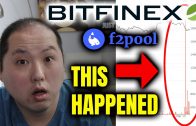Bitcoin Is Not the Harbinger of Financial Change, but DeFi Is

By: Tim Fries
The closer one is to the sun, the more blinded one becomes. These words of wisdom can be found in some form or another, relaying simple truth about human endeavors. The closer we are to the subject matter, the more likely we’ll miss important concepts outside of our concentrated focus—and engage in muddled thinking. This applies to the complex and pioneering world of blockchain in a number of ways. Fortunately, after many milestones crossed, we can take a more objective view in the rear-view mirror.
Bitcoin Has Become Mainstream – but Is Its Utility Future-Proof?
After reaching a $1 trillion market cap and becoming integrated into the world’s payment processing flows such as PayPal and Square’s CashApp, it’s safe to say that Bitcoin has broken many barriers. In the last couple of months, Canada has approved four Ethereum ETFs while a Bitcoin ETF was launched in February by Purpose Investments on the Toronto Stock Exchange.
In the United States, we have yet to see a Bitcoin ETF on NASDAQ or NYSE, although Kryptoin BTC ETF is currently under review by the SEC. However, the US has another kind of milestone to boast about. Coinbase crypto exchange has been listed on NASDAQ this month under COIN, following BTC’s price move in lockstep.

Source: TradingView, Bitcoin (BTC) vs Coinbase (COIN) stock during April 2021.
It is safe to say that Bitcoin has become the go-to cryptocurrency for large corporations, asset management groups, and hedge funds. Michael Saylor convinced plenty of them at the “Bitcoin for Corporations” conference held on February 3rd. They now see Bitcoin as digital gold to preserve their wealth against USD devaluation and possible negative interest rates, which some US fed economists have advocated for.
In the meantime, as the list of companies integrating Bitcoin grows by the day, even an automated accounting software like Freshbooks now accounts for balance sheets to include Bitcoin. To this end, Bitcoin’s trend of becoming a treasury reserve asset is continuing to accelerate.
While it is positive that a decentralized asset has achieved such status, we can no longer pretend that Bitcoin is a payment method, although one could use it as such. We can also no longer pretend that Bitcoin is as revolutionary as it has been portrayed. To be sure, it is a more convenient way to store value. It also makes it possible for the world to tap into a self-governing currency—with no ties to a particular nation-state or economy.
By the same token, Bitcoin lies at the mercy of governments. If North America and the EU decide to impose more restrictions, or even de-platform Bitcoin completely as they deploy CBDCs, it is difficult to not see Bitcoin’s value collapsing. As Allianz’s chief economic advisor El-Erian noted to CNN last month:
“I tend to tell people: be really careful. This is an asset that wants to establish itself, but it can only establish itself if governments allow it to. And it takes away a lot from governments.”
It’s certainly not out of the realm of possibility to conceive of governments banning Bitcoin. This happened with physical gold in the United States. They may innovate this time around and decide to de-platform Bitcoin within the framework of climate change. Since Tesla heavily invested in Bitcoin, and even made more profits from it than selling EVs in 2020, there has been an avalanche of headlines bemoaning Bitcoin’s carbon footprint.
This view would perfectly align with the already existing views of major banks such as Bank of America, citing Bitcoin’s low ESG rating (Environmental, Social, and Corporate Governance). In the end, whether Bitcoin survives or doesn’t, is not that important. Its mission—in the eyes of many—has been achieved: demonstrating the concept of decentralized assets to the entire world. More importantly, Bitcoin will be remembered as a project that pulled a true revolutionary force behind it—smart contracts.
The Dangers of Centralization
Even if one BTC becomes worth $1 million someday, it will not be as valuable as the disruptive force of smart contracts, pushed forward by the Ethereum blockchain. To understand its value, we can quickly look at Citadel Securities, to get a better understanding of the existing system in place.
The Citadel conglomerate holds an enormous concentration of power. It comprises:
- A market maker.
- A clearinghouse.
- A hedge fund that routinely engages in short-selling.
-
Citadel Securities, conducting almost as much trading volume as NASDAQ, then buys order flows from brokerages, like Robinhood, while being a participant of the DTC – Depository Trust Company. DTC holds the ownership of almost all securities as digital entitlements. The conflict of interest and the field open for greed, exploitation, and corruption is enormous.
DeFi Breaking Perpetual Oversight Lag
When an entity is incentivized to skirt the rules, they will do so at a greater and more creative pace. They will become so creative they will create a new phenomenon—regulatory capture—in which it is difficult to discern between regulators/policy makers and those they are supposed to regulate. Even if this arms race is not bound to be lost, it creates so much friction and instability that it might as well be. Unless of course, the entire playing field is changed.
For the first time in history, we can revamp how the financial world operates. At its fundamental level, this world is currently based on contracts enforced by corruptible human minds. This is the entire story of the banking sector and financial markets—from stock brokers like Robinhood to the leading forex trading platforms. Instead of occupying a labyrinth of institutions to make money in this arena’s flow, blockchain-powered smart contracts can occupy that space.
First put forward by cryptographer Nick Szabo in 1997, smart contracts now have the key ingredient they initially needed—blockchain. As computer programs that are stored inside a blockchain, they can automatically execute contracts without the risk of being falsified. In other words, there no longer exists a barrier to supplant all the functions that an entity such as Citadel now performs:
- Market Maker into Automated Market Maker (AMM): Permissionless smart contract—dApp—that utilizes liquidity pools instead of buyers and sellers.
- Clearinghouse into a distributed data store—blockchain.
- Centralized exchange into Decentralized Exchange (DEX)—using AMMs and liquidity provider tokens.
Uniswap is just one of these contenders, removing from the equation the need to even have an arms race between regulators and corruptors. Likewise, centralized banking—loaning and borrowing—can be decentralized by using cryptocurrencies as collateral. Smart contracts can automatically scan a crypto wallet to “see” how leveraged it already is.
Furthermore, existing traditional assets like stocks can also be tokenized, inheriting the key blockchain property of immutability. Binance, the world’s largest crypto exchange, is already offering two stock tokens—Tesla (TSLA) and Coinbase (COIN)—on its Binance Smart Chain (BSC).
DeFi Is Inevitable
Like the revolutionary printing press, smart contracts are the toothpaste that cannot be put back in the tube. The pace with which certain aspects of DeFi absorb corresponding parts of the legacy financial system depends on two factors:
- DeFi needs to be simplified so it can be used by the lowest common denominator. This includes interoperability between different blockchains, so that the end-user doesn’t even have to think about which blockchain space their transactions inhabit. Many believe this will likely be Ethereum, as it inches closer to complete its ETH 2.0 upgrade, giving it much-needed scalability and eco-sustainability.
- Top-down imperative. Ironically, to avoid lingering on the margins of the financial world, DeFi needs a top-down order to have a space to thrive in. On paper, one governing layer above the banks are governments. It may be laughable to think they will exert such pressure. However, there will likely be a point where it will be more laughable to ignore smart contracts, just as one would mock the idea of the printing press because of the monk lobby.
In conclusion, Bitcoin is in many ways a red herring of the crypto world. It is big because it is the first. And it is growing bigger because of the foibles of central banking. The latter can still stop it in its tracks, but what it cannot stop is DeFi—a new framework of perceiving finance—including how it is distributed and secured. While Bitcoin played a critical role in coalescing this new crypto-perception, DeFi is the ecosystem that could be erected to enact a world that is less corrupt.















